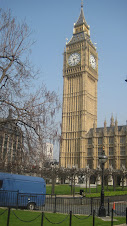
Thursday was dubbed “tourist day” and Br. Clark and I made our way up to Table Top Mountain via the gondola on a spectacular day to be treated to a magnificent view of Cape Town and the surrounding region. Since we were able to do this in the morning, we were able to catch the ferry to Robben Island in the afternoon. This island is best known as the location of the prison that held Nelson Mandela for 18 years. The other 9 years of his total imprisonment were in other locations.
Robben Island (the Dutch work for seals) was first a trading post, then a leper colony, a military site during the world wars and finally the prison for which it is best known today. The tour is in two parts, the first is a bus ride around the island with a talk about each phase of its history and the buildings that were added for them. The second part of the tour took place in the prison buildings. Whereas the bus tours are directed by younger South Africans, the tours of the prison buildings are given by former plitical prisoners. The impact of their pain and experience within these walls was conveyed in the quiet, yet forceful description of those years. Physical and psychological torture were employed routinely. Many broke, which was the intent. But those who survived were galvanized in their resolve to build a new South Africa that would have to rise from the old.
Having driven by and seen the lime quarry where many prisoners worked in searing heat and freezing cold, we learned that the cave along the far end was known among the prisoners as the “university” where leaders such as Nelson Mandela would debate and strategize while also taking time to teach the illiterate prisoners by drawing in the lime dust on the ground of the cave.
Despite the sounds of the birds and buses, there is a quiet on the island. A peace has descended on this place where healing is also happening. A location that housed those suffering from leprosy and later political prisoners is now a teaching place telling the story and uncovering the secret shame of this country. Most of the white residents of South Africa were given heavily censored information and kept ignorant of that island’s deeds. Part of the healing work involves not only the anger, bitterness and inequities of the Black and Coloured people abused through Apartheid, but the guilt and shame of the White people who lived side by side with them. It’s an immense task. But as the truth is being spoken, hope for that same healing grows.
These words are inscribed on a plaque in the prison yard: While we will not forget the brutality of Apartheid, we will not want Robben Island to be a monument to our hardship and suffering. We would want it to be a triumph of the human spirit against the forces of evil. A triumph of wisdom and largeness of spirit against small minds and pettiness; a triumph of courage and determination over human frailty and weakness; a triumph of the new South Africa over the old. (Ahmed Kathrada, imprisoned 26 years)
Robben Island (the Dutch work for seals) was first a trading post, then a leper colony, a military site during the world wars and finally the prison for which it is best known today. The tour is in two parts, the first is a bus ride around the island with a talk about each phase of its history and the buildings that were added for them. The second part of the tour took place in the prison buildings. Whereas the bus tours are directed by younger South Africans, the tours of the prison buildings are given by former plitical prisoners. The impact of their pain and experience within these walls was conveyed in the quiet, yet forceful description of those years. Physical and psychological torture were employed routinely. Many broke, which was the intent. But those who survived were galvanized in their resolve to build a new South Africa that would have to rise from the old.
Having driven by and seen the lime quarry where many prisoners worked in searing heat and freezing cold, we learned that the cave along the far end was known among the prisoners as the “university” where leaders such as Nelson Mandela would debate and strategize while also taking time to teach the illiterate prisoners by drawing in the lime dust on the ground of the cave.
Despite the sounds of the birds and buses, there is a quiet on the island. A peace has descended on this place where healing is also happening. A location that housed those suffering from leprosy and later political prisoners is now a teaching place telling the story and uncovering the secret shame of this country. Most of the white residents of South Africa were given heavily censored information and kept ignorant of that island’s deeds. Part of the healing work involves not only the anger, bitterness and inequities of the Black and Coloured people abused through Apartheid, but the guilt and shame of the White people who lived side by side with them. It’s an immense task. But as the truth is being spoken, hope for that same healing grows.
These words are inscribed on a plaque in the prison yard: While we will not forget the brutality of Apartheid, we will not want Robben Island to be a monument to our hardship and suffering. We would want it to be a triumph of the human spirit against the forces of evil. A triumph of wisdom and largeness of spirit against small minds and pettiness; a triumph of courage and determination over human frailty and weakness; a triumph of the new South Africa over the old. (Ahmed Kathrada, imprisoned 26 years)













No comments:
Post a Comment